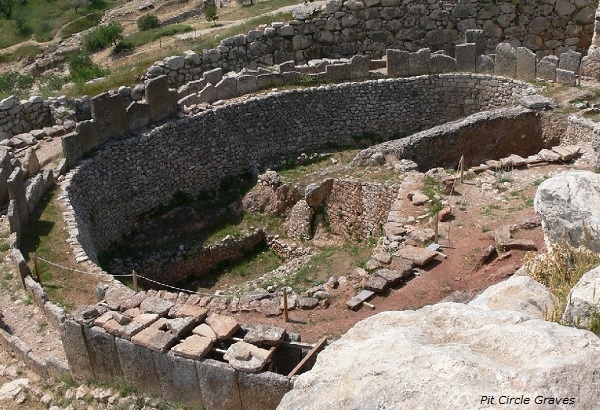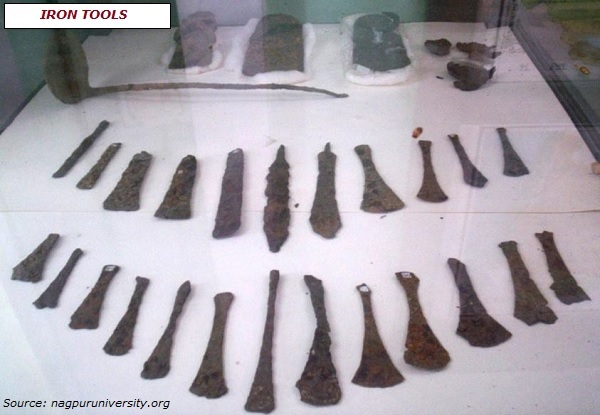
- Ancient Indian History - Home
- Study of Indian History
- Writing of Ancient Indian History
- Imperialist Historiography
- Historiography Nationalist Approach
- Marxist School of History
- Sources of Ancient Indian History
- Archaeological Sources
- Geographical Background
- Geography in Ancient Literature
- Stone Age Cultures
- Mesolithic Culture
- The Neolithic Age
- Chalcolithic Period of India
- Chalcolithic Culture In India
- Harappan Civilization
- Harappan Town Planning
- Harappan Crafts & Industries
- Harappan Culture
- Harappan Religion
- Harappan Chronology
- Vedic Civilization
- Vedic Society
- Vedic Politics
- Vedic Religion & Philosophy
- The Aryan Invasion
- Later Vedic Age
- Social System after Vedic Age
- Achievements of Indian Philosophy
- Evolution of Jainism
- Evolution of Buddhism
- Alexander’s Campaign in India
- Maurya Dynasty
- Kalinga War & its Impact
- Society & Economy during Mauryas
- Mauryan Governance
- Early History of South India
- Age of Smaller Dynasties
- Literature of Satavahana Period
- Society of Satavahana Period
- Economy of Satavahana Period
- Technology of Satavahana Period
- Chola Dynasty
- Pandya Dynasty
- Chera Dynasty
- Period of Foreign Invaders
- Gupta Period
- Decline of Guptas
- Governance of Gupta Period
- Literature of Gupta Period
- Economy in Gupta Period
- Science & Tech of Gupta Period
- India after the Gupta Period
- Period of Harsha
- South India during the Harsha Period
- Kadamba Dynasty
- History of Kamarupa
- India after Harsha
- Gurjara Pratiharas
- Palas of Bengal
- Rashtrakutas of Deccan
- Literature after the Harsha Period
- Society after the Harsha Period
- Economy after the Harsha Period
- Religion after the Harsha Period
- References & Disclaimer
Early History of South India
During the 1,000 B.C., the present states of Tamil Nadu and Kerala (in southern India) were inhabited by megalithic people.
The important phase of the ancient history of south India is from the Megalithic period to about A.D. 300.
Megalithic Phase
The literary meaning of the term megaliths is big stones i.e. mega means big and lit means stones. But the big stones are not associated with the megalith culture.
The megalithic culture is known for its burials.
The abundance of iron tools and a Black-and-Red pottery with the burials is the main identifying features of the megalithic culture.
The megalithic culture suggests that there was an abrupt change from the Neolithic stage into the Iron Age. And, they did not experience the intermediate Chalcolithic or Bronze Age.
Types of Megalithic Burial
The following are the major types of Megalithic burial −
Pit Circle Graves − In this type of burial, the body was first excoriated and then buried. Pots and iron artifacts were placed in a grave. A stone circle is erected around the pit.

Cists − These graves have a variety of forms. Cists which is stone coffin were made out of granite slabs with one or more capstones, with or without portholes. Cists are fully buried, half buried, or even on the bare rocks. They may contain single or multiple burials. A single or multiple stone circles erected around the cists.
Laterite chambers − In Malabar region, the grave-chambers excavated into laterite instead of granite slabs.
Alignments − It is a different kind of burial in which a large number of standing stones called Menhirs were arranged in squares or diagonals shape. They have been found in Gulbarga district and south of Hyderabad. However, in Kashmir, Menhirs have been found arranged in a semi-circle.
Sacrophagi − These legged urns of terracotta sometimes have animal heads and are not very common.
Urns − The practice of burying excoriated bones in urns seems to be taken from the Neolithic past. They are marked by capstones or stone circles, found mainly on the eastern coast.
Megalithic Tools
Undoubtedly, there was a wide range of variety in Megalithic construction, but the typical identity was a Black-and-Red ware and distinctive iron tools. They have uniformity all over the peninsula.
The pottery shapes include conical or looped lids, carinated vases, pedestalled bowls, spouted dishes, etc.
The iron tool includes axes with crossed straps, sickles, tripods, tridents, spearheads, swords, lamp hangers, arrowheads, and lamps.

Horse-harness bits and bells are also common finds.
Iron Age, in the history of India, is a period when the use of iron for tools and weapons became common, but during this time, the dated literature also began to be written. Therefore, the period of Megalithics marked a point in time where prehistory ends and history begins.
The builders of these Megalithics remain unknown to northern people because no reference to these monuments has been traced in Sanskrit or Prakrit literature though the early Tamil literature does contain descriptions of these burial practices.
Sources of Megalithic Period
-
The earliest account about the people and kingdoms of the area are preserved in three forms
Ashokan inscriptions;
Sangam literature; and
Megasthenese's accounts.
The Rock Edict II and XIII of Ashoka described the southern kingdoms of Chola, Pandya, Satyaputra, Keralaputra, and Tambapanni.
Ashoka's kindness to these neighboring states has been very much proved by the fact that he made provisions for medicines and food items etc. for animals and humans of these kingdoms.
In the Hathigumpha inscription of Kharvela, it has been found that Ashoka was credited for defeating a confederacy of Tamil states.
A detailed description of south Indian states is found in Sangam literature belonging to the first four centuries of the Christian era.
The Tamil language is the oldest among the spoken and literary languages of south India. Sangam literature was written in this language.
The Pandyan kings assembled literary assemblies called as Sangam.
Sangam literature consisted the collection of verses, lyrics, and idylls, which were composed by poets and scholars.
Sangam literature preserves folk memory about the society and life (in south India) between the 3rd Century B.C. and 3rd century A.D.